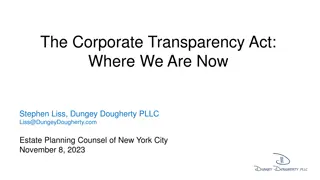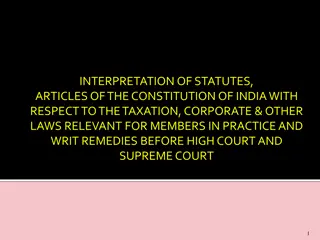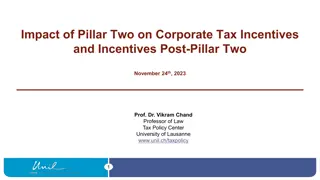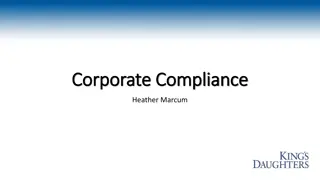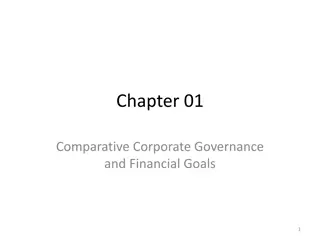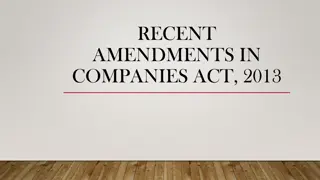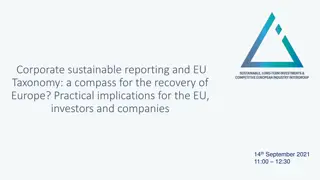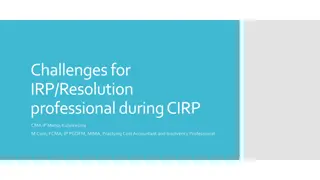Corporate Unconscionability
The concept of corporate unconscionability, including the exploitation of individuals in a special disadvantage. It explores the requirement of knowledge in cases of exploitation, such as actual knowledge, wilful blindness, recklessness, constructive knowledge, and constructive notice.
- Corporate Unconscionability
- Exploitation in Equity
- Special Disadvantage
- Knowledge Requirement
- Wilful Blindness
- Recklessness
- Constructive Notice
Download Presentation

Please find below an Image/Link to download the presentation.
The content on the website is provided AS IS for your information and personal use only. It may not be sold, licensed, or shared on other websites without obtaining consent from the author. Download presentation by click this link. If you encounter any issues during the download, it is possible that the publisher has removed the file from their server.
E N D
Presentation Transcript
Corporate Unconscionability Professor Elise Bant UWA Law School
Unconscionable dealing in equity Special disadvantage; plus Exploitation of position of special disadvantage Defendant s knowledge of special disadvantage is a key element of exploitation, although is not the whole of it. What does knowledge require in this context? Actual knowledge, wilful blindness, recklessness, constructive knowledge, constructive notice ?
Kakavas Problem (pathological) gambler [161] Equitable intervention to deprive a party of the benefit of its bargain on the basis that it was procured by unfair exploitation of the weakness of the other party requires proof of a predatory state of mind. Heedlessness of, or indifference to, the best interests of the other party is not sufficient for this purpose. The principle is not engaged by mere inadvertence, or even indifference, to the circumstances of the other party to an arm s length commercial transaction. [162] The appellant s attempt to rely upon constructive notice to supply the want of findings of awareness on the part of Crown s employees of any personal disability which affected the appellant should be rejected.
Thorne v Kennedy Kiefel CJ, Bell, Gageler, Keane and Edelman JJ: [38] Before there can be a finding of unconscientious taking of advantage, it is also generally necessary that the other party knew or ought to have known of the existence and effect of the special disadvantage [citing CBA v Amadio (Mason J)]. Cites Kakavas with approval but does not address further the requirement of knowledge, other than stating that it has been described variously .
Nitopi v Nitopi [2022] NSWCA 162 Kakavas and Thorne are not readily reconcilable! Kakavas did not lay down an exhaustive approach to UD (dicta re arms-length commercial transacting was Kakavas that?). Predatory conduct is sufficient but not necessary. Constructive knowledge will do, constructive notice won t A finding of predatory conduct will normally require some active dealing with the defendant. But the passive acceptance or retention of a benefit may, in certain circumstances, be unconscionable. Improvidence of transaction may assist in finding inference of UD (causation/exploitation)
Statutory Unconscionability Section 12CB ASIC Act (see also s21 ACL) (1) A person must not, in trade or commerce, in connection with: (a)the supply or possible supply of financial services to a person (other than a listed public company); or (b)the acquisition or possible acquisition of financial services from a person (other than a listed public company); engage in conduct that is, in all the circumstances, unconscionable.
Statutory Unconscionability (4) It is the intention of the Parliament that: (a) this section is not limited by the unwritten law of the States and Territories relating to unconscionable conduct; and (b) this section is capable of applying to a system of conduct or pattern of behaviour, whether or not a particular individual is identified as having been disadvantaged by the conduct or behaviour; and (c) in considering whether conduct to which a contract relates is unconscionable, a court s consideration of the contract may include consideration of: (i) the terms of the contract; and (ii) the manner in which and the extent to which the contract is carried out; and is not limited to consideration of the circumstances relating to formation of the contract.
Statutory Unconscionability Section 12 CC (1) Without limiting the matters to which the court may have regard for the purpose of determining whether a person (the supplier) has contravened section 12CB in connection with the supply or possible supply of financial services to a person (the service recipient), the court may have regard to .[relative bargaining positions, disproportionate terms, capacity to understand terms, pressure, influence, unfair tactics, market price, equality of treatment of other customers, whether the defendant complied with any industry codes, good faith etc ] These are sometimes called interpretive factors .
ASIC v AGM General v personal financial advice Companies offered over-the-counter (OTC) derivative products being contracts for difference (CFDs) including margin foreign exchange contracts (FX contracts) to retail investors in Australia. Essentially a kind of gambling (two up) s12CA ASIC Act (like s20ACL): Equitable UD plus additional statutory remedies and enforcement 12CB and CC ASIC Act How do Equitable UD and Statutory UD relate? [362] (Beach J): a statutory standard rather than invoking the alchemy of equity
ASIC v AGM Sixth, as may be distilled from Allsop CJ s discussion in Paciocco v Australia and New Zealand Banking Group Ltd (2015) 236 FCR 199 at [259]-[306]: (a) fairness and equality are values and conceptions underpinning s 12CC(1)(a), (b), (d) to (f) and (i) to (k); more particularly, s 12CC(1)(a), (j)(i) and (k) recognise asymmetry of power; (b) a lack of understanding or ignorance of a party is the conception underpinning s 12CC(1)(c); (c) the risk and worth of the bargain are the conceptions underpinning s 12CC(1)(e) and (i); a broader and related although not explicit concept is the question of asymmetry of information; and (d) good faith and fair dealing are values and conceptions underpinning s 12CC(1)(l).
ASIC v AGM [373] Eighth, statutory unconscionability does not require only focusing on the alleged wrong doer s or its officers or employees state of mind, whether actual intention or knowledge or what it ought to have known. It is a broader objective evaluation of behaviour including the causes and reasons for such behaviour and its effect or likely effect. But the subjective state of mind of the alleged contravener whether actual or constructive is relevant to the broader sense. Although I am concerned with a normative notion of conscience, the boundaries and content of which are informed by the explicit and implicit values previously identified, state of mind is relevant.
ASIC v AGM Thirteenth and more generally, it is important to note that the conduct which attracts the operation of the statutory provision is assumed to be of sufficient seriousness such as to potentially warrant the imposition of a pecuniary penalty. That perspective is not irrelevant to the construction and application of ss 12CB and 12CC(1).
ASIC v AGM pattern of behaviour the reference to behaviour is looking at the external manifestation of behaviour and whether it can be characterised as a pattern the external observation of events . But to be clear, in context the meaning of pattern is most usefully expressed as a regular and intelligible form or sequence discernible in certain actions or situations (Oxford English Dictionary, meaning 11(b)). So there has to be both repetition and external discernibility.
ASIC v AGM system of conduct connotes something designed or intended in its structure; contrastingly, a pattern may be manifested without any design or intentional input. Further, system is usually saying something about the internal structure, for example, internal working, of whatever it is that has produced or reflects the conduct. It cannot just mean numerous instances or a pattern of external behaviour. Otherwise the former part of the phrase system of conduct or pattern of behaviour would collapse into the latter. But a system of conduct could produce a pattern of behaviour . Relatedly, evidence of a pattern of behaviour could enable you to infer a system of conduct in some cases. Now system also connotes an organised and connected group or set of things that can be thought of as a complex whole. The gist is organisation and connection.
ASIC v AGM [cf equitable UD] The targeting of disadvantaged people does not form part of the system of conduct which ASIC alleges. Indeed, the evidence establishes that AGM, OT and Ozifin were entirely undiscriminating as to who they accepted as their clients. That lack of discrimination was itself an aspect of the system of conduct engaged in that was in all the circumstances unconscionable. The objective assessment of the system was that the purpose was for clients to lose money [T]he [Account Managers] used software that provided remote view access to clients computers to determine how much money a client could deposit, and therefore to advance the purpose of having the client deposit the maximum funds available to them . Use of pressure, misleading and deceptive conduct, non-disclosure (manipulation) built into the system (training of AMs)
Stubbings v Jams Suppose this business model: Unbankable consumer borrowers (no income) told to set up a company to borrow for business purposes They become personal guarantors and put up residential property as security All dealings are done through (introducers, solicitors, accountants) who provide various pro forma certificates of advice and are rewarded huge fees Information silos built into the business model The borrower/guarantor is doomed to fail professional intermediaries
Stubbings v Jams Majority plurality consider equitable UD only: Judges inferred lender s knowledge of the plaintiff s special disadvantage from two characteristics of the business model. First, the system could only apply to unbankable borrowers. Secondly, it employed structural artifices (such as the interposition of intermediaries, and the use of pro forma certificates of independent professional advice, from associates of the lender) to protect itself from knowledge of the individual borrower s particular circumstances of disadvantage.
Stubbings v Jams Gordon J: statutory and equitable unconscionability made out. A certain level of lender knowledge of special disadvantage was implicit in the system of conduct , and the system was actively designed to immunise lender from further, actual knowledge. Steward J: the system of conduct was an artifice designed to prevent equitable relief and also supported findings of wilful blindness on the part of the lender s solicitor, which satisfied equitable doctrine


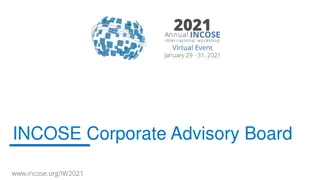
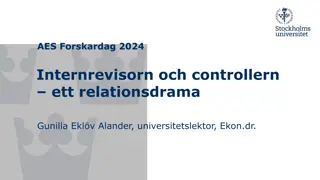

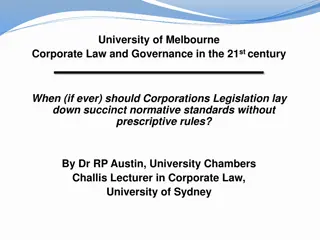
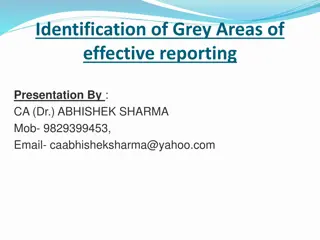


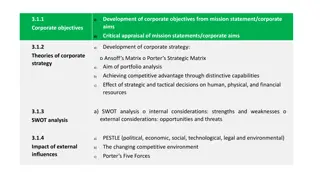
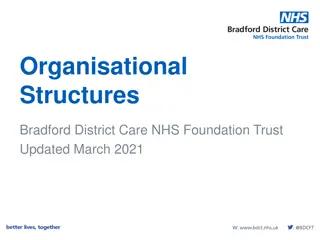

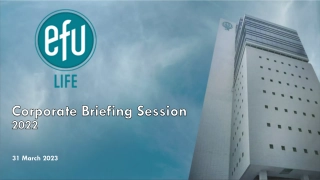



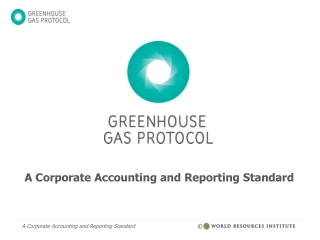
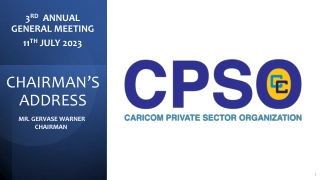


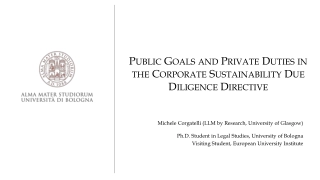


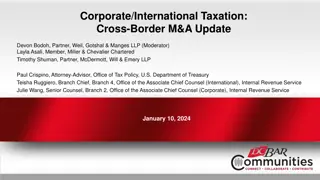
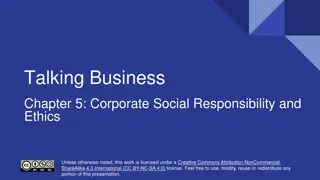
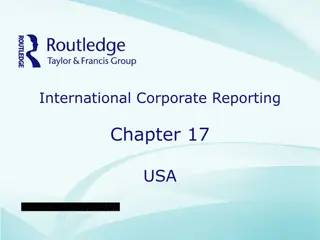

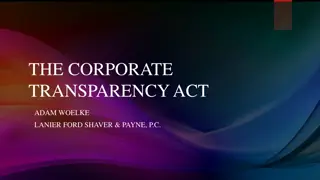
![Enhancing Corporate Transparency: Analysing The Companies Amendment Bill [B27B-2023]](/thumb/60028/enhancing-corporate-transparency-analysing-the-companies-amendment-bill-b27b-2023.jpg)
